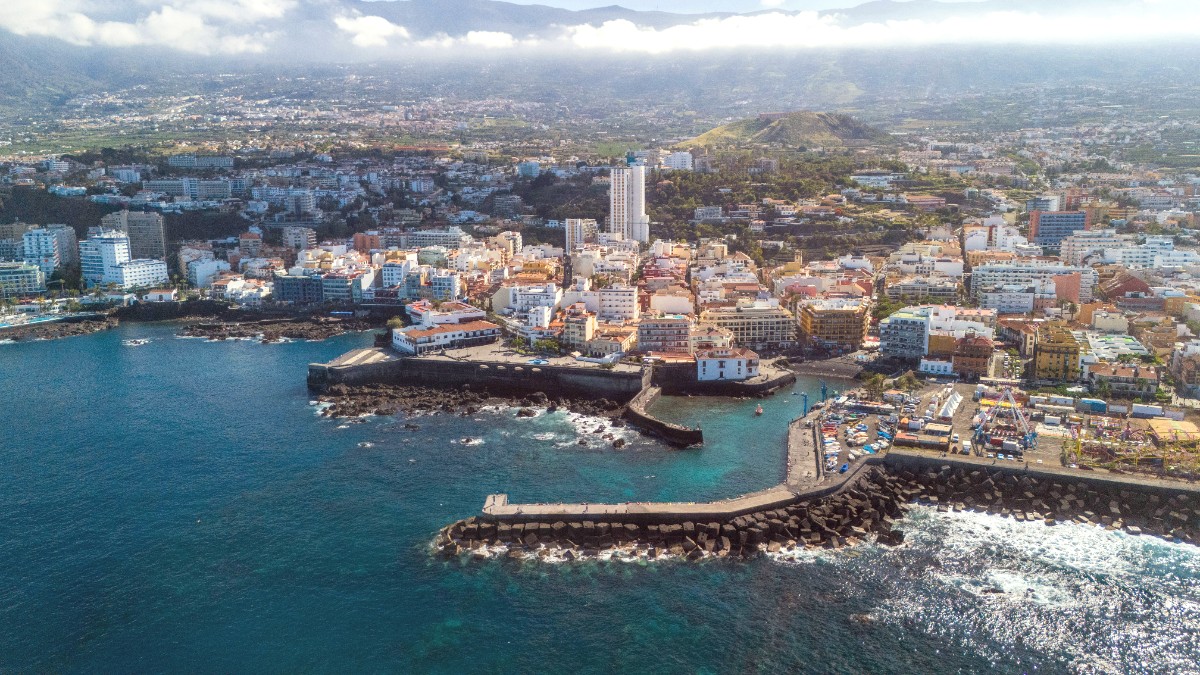
Tenerife, Canary Islands
The islands' isolation and volcanic soil shaped their traditional dishes. Farmers grew resilient crops like potatoes and various vegetables. Fishermen provided abundant seafood.
Historical trade brought new ingredients and cooking methods, creating a distinct culinary identity. The cuisine prioritizes local produce and freshness.
Small, boiled potatoes cooked in very salty water until shriveled. A staple, often served with "mojo rojo" (red, spicy) and "mojo verde" (green, herb-based) sauces.
Toasted grain flour, a historical staple used in stews, desserts, or mixed with milk. Fresh local fish (vieja, cherne, sama), octopus, and squid feature prominently, often grilled.
Goats' cheese ("queso de cabra") is popular, often served grilled with mojo or honey. Small, sweet Canary Island bananas are a major local product, enjoyed fresh or in desserts.
Small, boiled, salty potatoes with red (mojo rojo) and green (mojo verde) sauces. Find this in nearly every traditional restaurant and guachinche.
A culinary cornerstone.
Hearty fish stew with salted fish (often cherne), sweet potato, and mojo. Common in coastal areas, reflecting the island's fishing heritage.
A comforting stew.
Rabbit marinated and cooked in a rich garlic and wine sauce. "Old clothes," a stew with shredded beef, chickpeas, potatoes, and vegetables.
Flavorful meat dishes.
Bienmesabe is a sweet almond cream dessert, often with ice cream. Frangollo is a milky pudding with gofio, raisins, almonds, and honey.
Kiosks offer churros (fried dough) in mornings. Bocadillos (sandwiches) are widely available. Chestnuts are popular in autumn.
For serious food enthusiasts, high-quality meats and seafood are available in sophisticated settings.
Balance of quality and value, offering traditional and modern Spanish cuisine with charming atmospheres.
Affordable, authentic experiences, including traditional eateries and local markets.
Availability is increasing. Most restaurants offer salads, grilled vegetables, or papas arrugadas. Vegan options may require specific inquiry.
Look for "vegetariano" or "vegano" on menus.
Awareness is growing. Carry a Translation card for Spanish explanations. Restaurants often adapt dishes, especially grilled meats or fish.
Ask for "sin gluten."
Learn local dishes like mojo and papas arrugadas.
Explore banana plantations and local agriculture.
Visit bodegas in wine regions for tastings.
Rustic, family-run eateries with local wine.
Bienmesabe is a sweet almond cream dessert, often with ice cream. Frangollo is a milky pudding with gofio, raisins, almonds, and honey.
Traditional and comforting desserts.
Kiosks offer churros (fried dough pastries) in the mornings, often with chocolate. Roasted chestnuts appear in winter.
Bocadillos (sandwiches) are widely available in local bars.
Fresh local fish baked in a salt crust (a la sal) or simply grilled (a la plancha). This highlights the freshness of the seafood.
While Galician in origin, this octopus dish, seasoned with olive oil, paprika, and salt, is popular across Spain, including Tenerife.
Learn to prepare local dishes like papas arrugadas and various mojo sauces.
Several schools in Puerto de la Cruz offer short-term or intensive Spanish courses.
Workshops on traditional Canarian crafts, like lacemaking or pottery, may be available.
The Oriental Spa Garden (Hotel Botánico) is a highly acclaimed luxury spa. Many 4 and 5-star hotels have their own spa facilities, sometimes open to non-guests.
Wide range of treatments and thermal circuits.
No natural hot springs directly in Puerto de la Cruz. Some natural volcanic pools are found along the coast (e.g., Charco del Viento).
Offers an unique, natural swimming experience.
Some larger hotels feature live music. Bars in the Martiánez area and around Plaza del Charco occasionally host live performances. Blanco Bar is popular for cocktails and DJ sets.
Limbo Disco is an established nightclub. Other smaller clubs and late-night bars are found around the Martiánez area, catering to various music tastes.
Casino Puerto de la Cruz, located within the Martiánez complex, offers gaming and entertainment into the late hours. Bar districts like Plaza del Charco remain lively.
Embrace the late dining culture. Enjoy an aperitivo or tapas around 7 PM, then plan for dinner after 8:30 PM. Yoga studios offer drop-in classes for those seeking mindfulness.